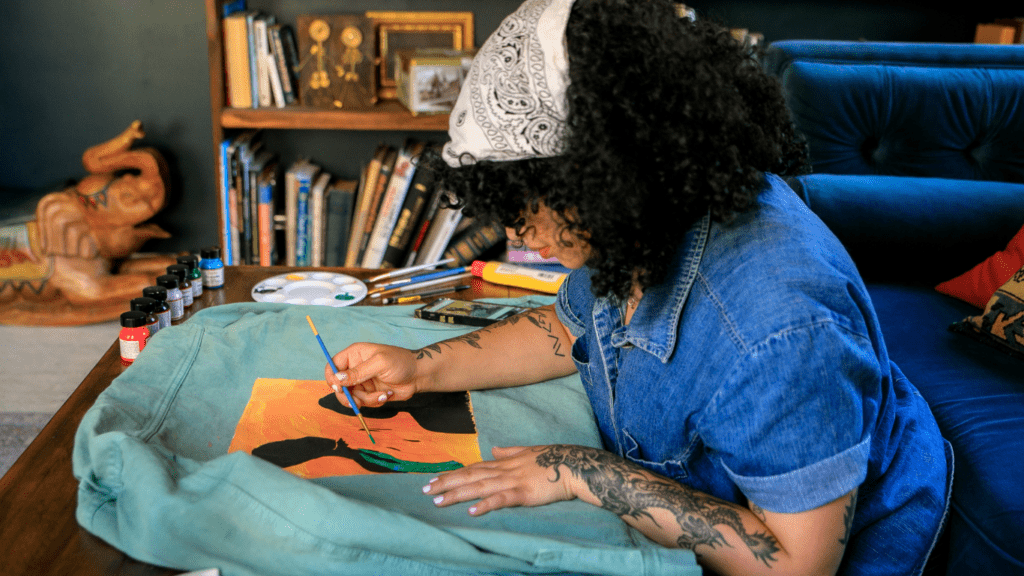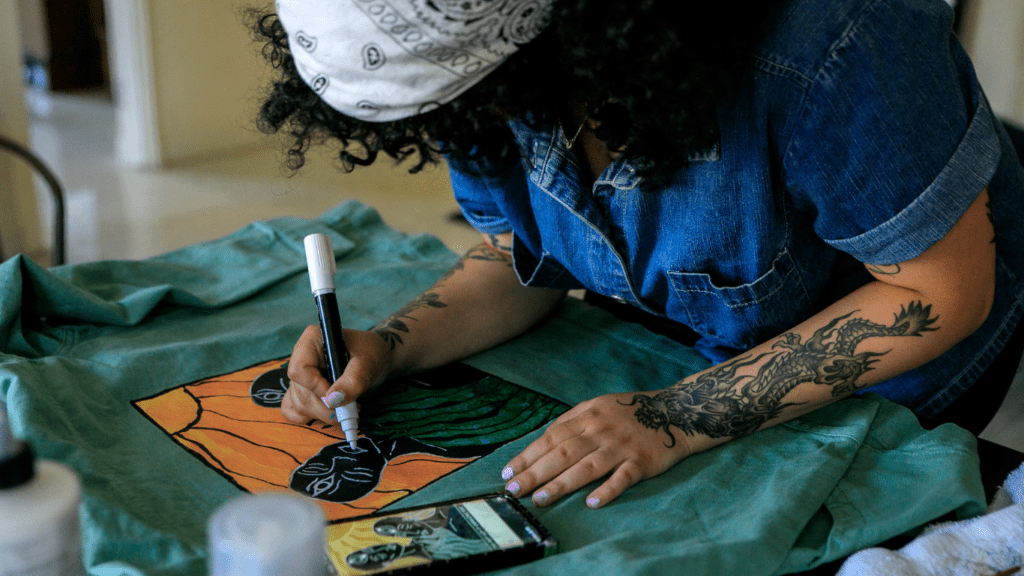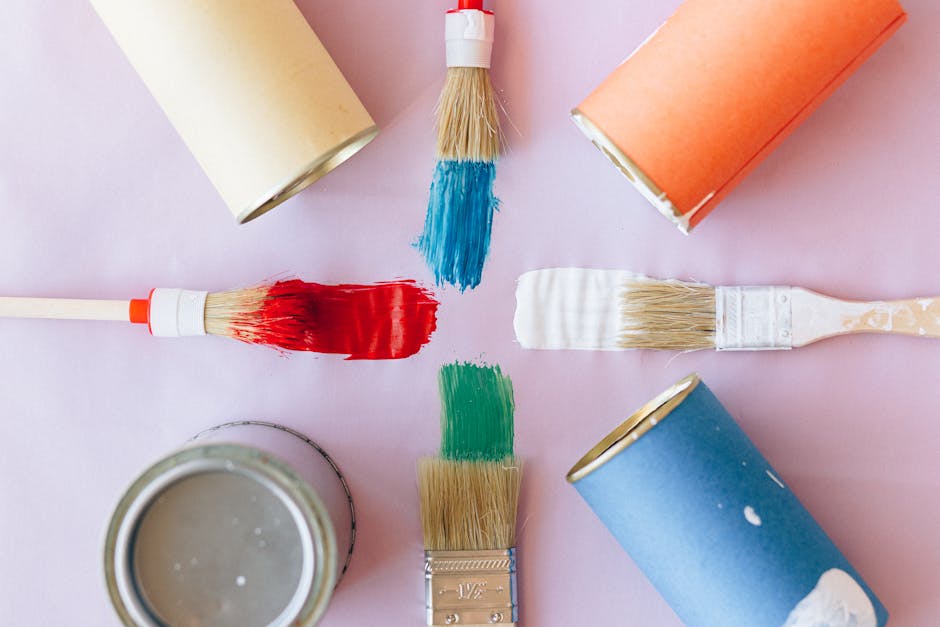Have you ever looked at your wardrobe and wished for something unique and personalized? Well, I’ve got just the solution for you – customizing clothing with fabric paint and dyes. It’s a fun and creative way to give your old clothes a new lease on life and express your individual style.
With fabric paint and dyes, the possibilities are endless. From tie-dye techniques to intricate designs, you can transform plain garments into one-of-a-kind pieces that reflect your personality. Whether you’re a seasoned crafter or just starting, customizing clothing with these materials is a fantastic way to unleash your creativity and make a fashion statement.
Join me on this journey as we explore the exciting world of customizing clothing with fabric paint and dyes. Get ready to turn your plain outfits into wearable works of art that are sure to turn heads and spark conversations.
Exploring the World of Customizing Clothing with Fabric Paint and Dyes
Why Customize Your Clothing?
Customizing your clothing with fabric paint and dyes allows me to unleash my creativity, breathe new life into old pieces, and showcase my unique style through vibrant colors and intricate designs.
The Basic Materials Needed
To start customizing your clothing, I recommend having fabric paint, fabric dyes, brushes, stencils, and masking tape on hand. These essential materials will help me bring my creative visions to life on various fabric surfaces.
Choosing the Right Fabric Paints
When it comes to customizing clothing with fabric paints, selecting the right type is crucial for achieving vibrant and long-lasting results. The market offers various options, each with its unique properties that cater to different needs.
Types of Fabric Paints
- Acrylic Fabric Paints: These paints are versatile and work well on different fabric types. They offer good coverage and color intensity, making them ideal for bold designs.
- Fabric Spray Paints: Convenient and easy to use, fabric spray paints provide a quick way to cover larger areas or create gradient effects on garments.
- Fabric Markers: Perfect for detailed work or creating intricate designs, fabric markers offer precision and control, allowing for fine lines and shading.
- Consider the Fabric Type: Different fabric paints are designed for specific materials, so choose paints that adhere well to the fabric you’re working with.
- Washability: Opt for fabric paints that are washable and colorfast to ensure your designs stay vibrant even after multiple washes.
- Application Method: Depending on your design needs, select the appropriate application method, whether it’s brushing, spraying, or drawing with markers.
- Set Budget: Determine your budget and look for fabric paints that provide the quality and quantity you need within your price range.
By understanding the various types of fabric paints available and following these tips for selection and purchase, you can bring your creative visions to life on clothing with confidence and lasting impact.
Mastering Fabric Dye Techniques
When it comes to mastering fabric dye techniques, understanding the different types of dyes available is crucial. Each type of dye offers unique characteristics that can impact the outcome of your clothing customization project. Here’s a breakdown of the various types of dyes you can use:
Different Types of Dyes
- Direct Dyes: These dyes are water-soluble and are often used for dyeing cotton, silk, and wool fabrics. Direct dyes require the addition of chemicals known as mordants to set the color.
- Reactive Dyes: Reactive dyes form a permanent bond with the fabric, resulting in excellent colorfastness. They are commonly used for natural fibers like cotton and produce vibrant hues.
- Acid Dyes: Ideal for protein fibers such as wool and silk, acid dyes provide intense colors. These dyes require an acidic environment to bond with the fabric effectively.
- Disperse Dyes: Disperse dyes work well with synthetic fibers like polyester and acetate. They are dispersed in a liquid medium before application to the fabric, creating even and bright colors.
- Vat Dyes: Vat dyes are suitable for natural fibers and synthetic blends, offering excellent color penetration. They are known for their colorfastness and are often used in traditional dyeing processes.
Each type of dye has its unique properties, so choosing the right one will depend on the fabric you’re working with and the desired outcome of your custom clothing project.
Step-by-Step Guide to Dyeing Fabrics
To achieve professional-quality results when dyeing fabrics, follow these simple steps:
- Preparation: Wash the fabric to remove any dirt, oils, or finishes that may interfere with the dyeing process. If needed, pre-treat the fabric to ensure even color absorption.
- Dye Mixing: Prepare the dye according to the manufacturer’s instructions, ensuring the correct ratio of dye to water for the desired shade.
- Application: Immerse the fabric in the dye solution, ensuring it is completely submerged for even coloring. You can also apply the dye using various techniques like dip-dyeing, tie-dyeing, or painting for creative effects.
- Fixing the Dye: Follow the recommended method for setting the dye. This may include heat-setting, steaming, or using fixing agents to ensure the color remains vibrant and long-lasting.
- Rinsing and Washing: Once the dye has set, rinse the fabric thoroughly to remove excess dye. Wash the fabric separately in cold water to remove any remaining dye particles.
By mastering fabric dye techniques and following a systematic approach to dyeing fabrics, you can create customized clothing pieces that showcase your creativity and style effectively.
Practical Tips for Applying Fabric Paint
When customizing clothing with fabric paint, proper application is key to achieving desired results. Here are some practical tips for successfully applying fabric paint:
Preparing the Fabric
Before starting to paint, it’s crucial to prepare the fabric properly. Ensure the fabric is clean and free of any wrinkles. If needed, wash and dry the fabric before painting to remove any residues that could affect the paint’s adherence.
Techniques for Painting Success
To ensure your painting endeavors are successful, consider using different techniques based on the design you wish to create. Techniques like stencil painting, freehand painting, or using fabric markers can help you achieve varying effects and details on your clothing pieces. Experiment with different methods to find what works best for your artistic vision.
Inspiration for Your Projects
When looking for inspiration for your custom clothing projects using fabric paint and dyes, consider exploring various theme ideas to spark your creativity and showcase successful projects that can guide your customization journey.
Theme Ideas for Customization
As I delve into theme ideas for customizing clothing with fabric paint and dyes, I find that incorporating nature-inspired motifs can bring a refreshing touch to your garments. Think of floral patterns, leaf designs, or even intricate landscapes to elevate your pieces. Additionally, exploring geometric shapes and abstract art can add a modern and artistic flair to your customized clothing. Don’t be afraid to experiment with different themes to find what resonates with your style.
Showcase of Successful Projects
Reflecting on successful projects can offer valuable insights and ideas for your custom clothing endeavors. By browsing through online platforms or attending local craft fairs, you can discover a myriad of creative designs that have been brought to life using fabric paint and dyes. Witnessing the innovative ways in which others have transformed plain garments into unique and personalized creations can ignite your imagination and motivate you to embark on your own customization projects.



